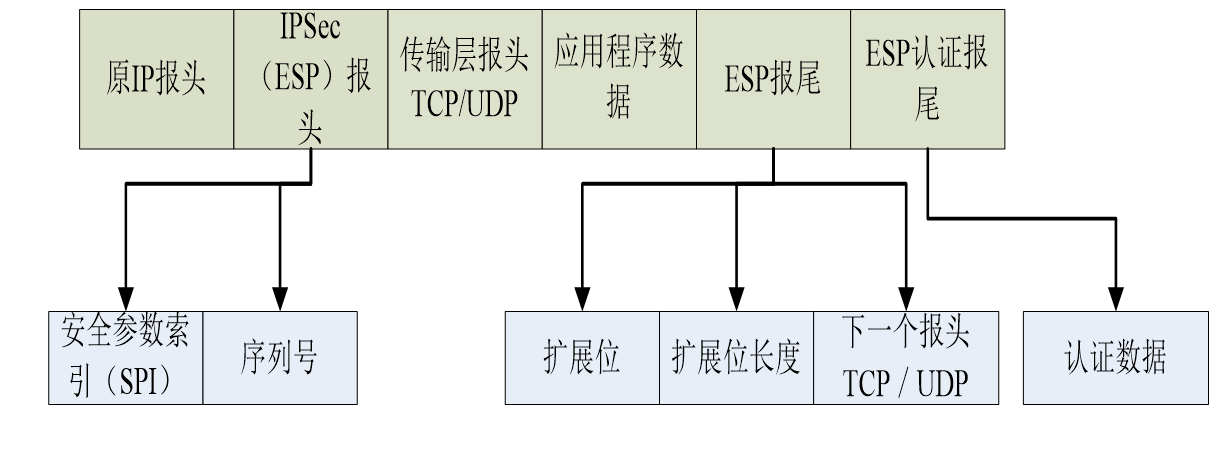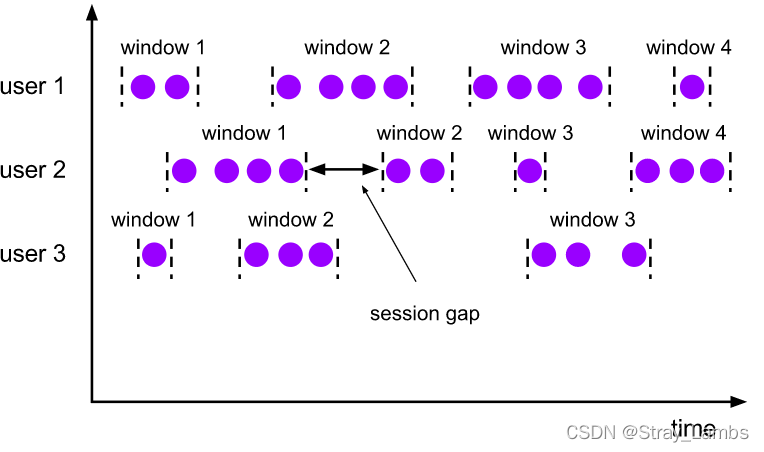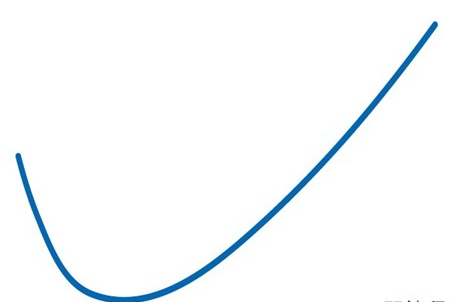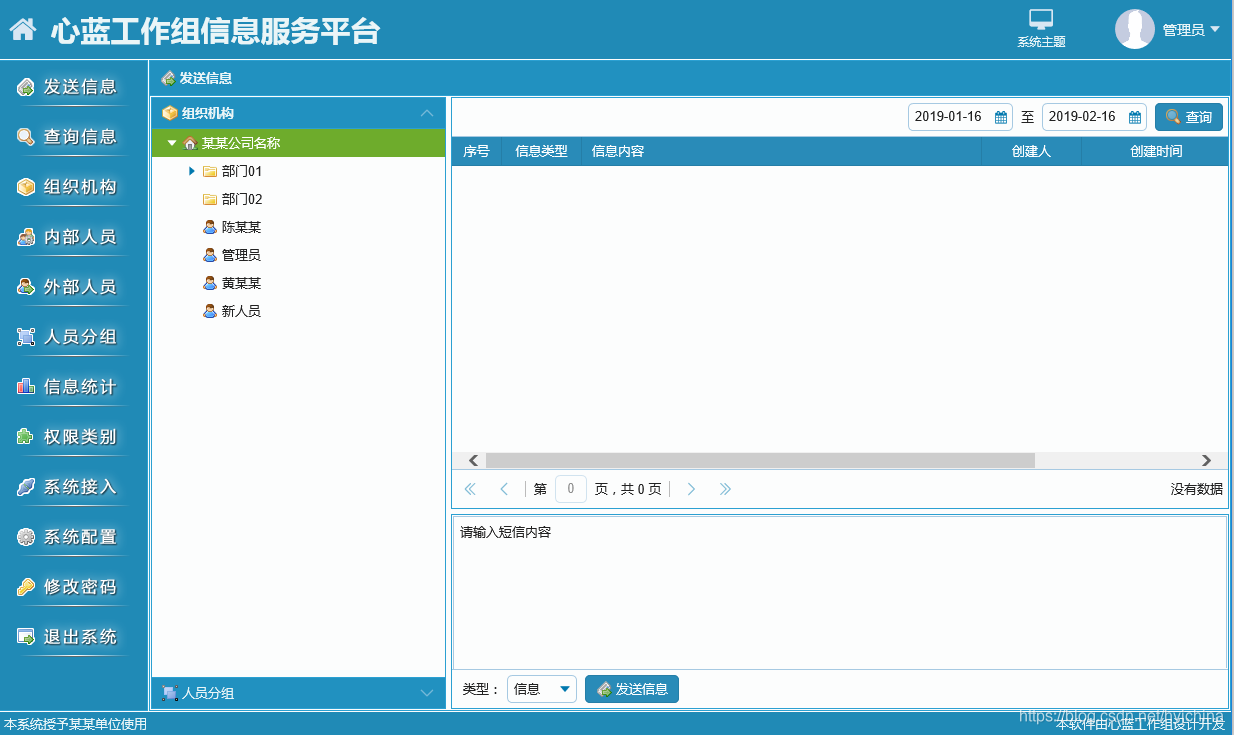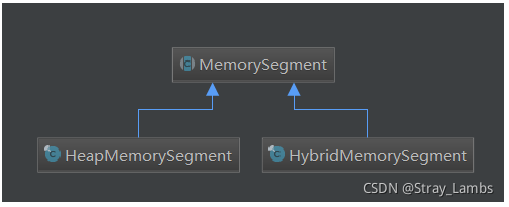当前位置:网站首页>Interpretation of Flink source code (II): Interpretation of jobgraph source code
Interpretation of Flink source code (II): Interpretation of jobgraph source code
2022-07-06 17:28:00 【Stray_ Lambs】
Catalog
JobGraph The generation process
JobGraph Source code interpretation
Last time when it comes to ,StreamGraph Which is generated on the client , And is generated Node Nodes and Edge, Mainly through StreamAPI Generate , Represents the topology , This time I will tell you about JobGraph Generation ( With Yarn Cluster pattern ).
First ,JobGraph Is based on StreamGraph To optimize ( Including settings Checkpoint、slot Group strategy , Memory ratio, etc ), The most important thing is Transfer multiple qualified StreamNode link chain Together as a node , Reduce the serialization required for the flow of data between nodes 、 Deserialization 、 Transmission consumption .
Just a quick note JobGraph The process of , Will meet the conditions Operator Operators are combined into ChainableOperator, Generate corresponding JobVertex、InermediateDataSet and JobEdge etc. , And through JobEdge Connected to the IntermediateDataSet and JobVertex, This is just to generate the logical structure of coarse-grained user code ( Such as data structure ), The real data is generated later Task Time structured ResultSubPartition and InputGate Will interact with the user's physical data .
JobGraph The core object
1、JobVertex
stay StreamGraph in , Each operator corresponds to a StreamNode. stay JobGraph in , Eligible multiple StreamNode Will merge into one JobVertex, That is, a JobVertex Contains one or more operators .
2、JobEdge
stay StreamGraph in ,StreamNode The connection between StreamEdge Express , And in the JobGraph in ,JobVertex The connection between JobEdge Express .JobEdge amount to JobGraph Data flow channel in , The upstream data is IntermediateDataSet,IntermediateDataSet yes JobEdge Input dataset for , Downstream consumers are JobVertex.
JobEdge Stored the target JobVertex Information , No source JobVertex Information , But the source is stored IntermediateDataSet.
3、IntermediateDataSet
IntermediateDataSet Is by an operator 、 The data set produced by the source or any intermediate operation , Used to represent JobVertex Output .

JobGraph The generation process
JobGraph The generation entry of is StreamingJobGraphGenerator.createJobGraph(this, jobID), The final call StreamingJobGraphGenerator.createJobGraph().
Entry function
Procedure of entry function call :executeAsync( Generate YarnJobClusterExecutorFactory)->execute( Generate JobGraph, And issue deployment tasks to the cluster )->getJobGraph( according to Pipeline Type generation offline planTranslator Or in real time streamGraphTranslator)->createJobGraph( Generate StreamingJobGraphGenerator Instance and create JobGraph)
@Internal
public JobClient executeAsync(StreamGraph streamGraph) throws Exception {
checkNotNull(streamGraph, "StreamGraph cannot be null.");
checkNotNull(configuration.get(DeploymentOptions.TARGET), "No execution.target specified in your configuration file.");
// call DefaultExecutorServiceLoader Generate YarnJobClusterExecutorFactory
final PipelineExecutorFactory executorFactory =
executorServiceLoader.getExecutorFactory(configuration);
checkNotNull(
executorFactory,
"Cannot find compatible factory for specified execution.target (=%s)",
configuration.get(DeploymentOptions.TARGET));
// Generate YarnJobClusterExecutor Call to generate JobGraph Then submit the task resource application to the cluster
CompletableFuture<JobClient> jobClientFuture = executorFactory
.getExecutor(configuration) //new YarnJobClusterExecutor
.execute(streamGraph, configuration, userClassloader);
........
}
@Override
public CompletableFuture<JobClient> execute(@Nonnull final Pipeline pipeline, @Nonnull final Configuration configuration, @Nonnull final ClassLoader userCodeClassloader) throws Exception {
// Generate JobGraph
final JobGraph jobGraph = PipelineExecutorUtils.getJobGraph(pipeline, configuration);
try (final ClusterDescriptor<ClusterID> clusterDescriptor = clusterClientFactory.createClusterDescriptor(configuration)) {
final ExecutionConfigAccessor configAccessor = ExecutionConfigAccessor.fromConfiguration(configuration);
final ClusterSpecification clusterSpecification = clusterClientFactory.getClusterSpecification(configuration);
// Start publishing deployment tasks to the cluster
final ClusterClientProvider<ClusterID> clusterClientProvider = clusterDescriptor
.deployJobCluster(clusterSpecification, jobGraph, configAccessor.getDetachedMode());
LOG.info("Job has been submitted with JobID " + jobGraph.getJobID());
// Start the asynchronous callable thread , Return to the deployment task completed
return CompletableFuture.completedFuture(
new ClusterClientJobClientAdapter<>(clusterClientProvider, jobGraph.getJobID(), userCodeClassloader));
}
}
public static JobGraph getJobGraph(
Pipeline pipeline,
Configuration optimizerConfiguration,
int defaultParallelism) {
// according to Pipeline Type generation offline planTranslator Or in real time streamGraphTranslator
FlinkPipelineTranslator pipelineTranslator = getPipelineTranslator(pipeline);
return pipelineTranslator.translateToJobGraph(pipeline,
optimizerConfiguration,
defaultParallelism);
}
// Generate StreamingJobGraphGenerator Instance and create JobGraph and
public static JobGraph createJobGraph(StreamGraph streamGraph, @Nullable JobID jobID) {
return new StreamingJobGraphGenerator(streamGraph, jobID).createJobGraph();
}createJobGraph function
stay StreamingJobGraphGenerator In the generator , Basically, all member variables are used to help generate the final JobGraph.
among createJobGraph The process of a function : First, generate a unique for all nodes hash id, This hash function can be defined by the user , If the node has not changed in multiple submissions ( Such as group 、 Concurrency 、 The relationship between upstream and downstream, etc ), So this hash id It won't change , This is mainly for Fault recovery . And then in chaining Handle 、 Generate JobVetex、JobEdge etc. , Then write various configuration information, such as cache 、checkpoints etc. .
public class StreamingJobGraphGenerator {
private StreamGraph streamGraph;
private JobGraph jobGraph;
// id -> JobVertex
private Map<Integer, JobVertex> jobVertices;
// Already built JobVertex Of id aggregate
private Collection<Integer> builtVertices;
// Physical edge set ( Exclude chain Inner edge ), Sort by creation order
private List<StreamEdge> physicalEdgesInOrder;
// preservation chain Information , It is used to build OperatorChain,startNodeId -> (currentNodeId -> StreamConfig)
private Map<Integer, Map<Integer, StreamConfig>> chainedConfigs;
// Configuration information of all nodes ,id -> StreamConfig
private Map<Integer, StreamConfig> vertexConfigs;
// Save the name of each node ,id -> chainedName
private Map<Integer, String> chainedNames;
// Constructors , Only StreamGraph
public StreamingJobGraphGenerator(StreamGraph streamGraph) {
this.streamGraph = streamGraph;
}
private JobGraph createJobGraph() {
preValidate();
// make sure that all vertices start immediately
// First step :
// Not batch The default mode is EAGER
jobGraph.setScheduleMode(streamGraph.getScheduleMode());
// Generate deterministic hashes for the nodes in order to identify them across
// submission if they didn't change.
// The second step Determine the node hash value
Map<Integer, byte[]> hashes = defaultStreamGraphHasher.traverseStreamGraphAndGenerateHashes(streamGraph);
// Generate legacy version hashes for backwards compatibility
// The third step Determine the node user-defined userHash value
List<Map<Integer, byte[]>> legacyHashes = new ArrayList<>(legacyStreamGraphHashers.size());
for (StreamGraphHasher hasher : legacyStreamGraphHashers) {
legacyHashes.add(hasher.traverseStreamGraphAndGenerateHashes(streamGraph));
}
// Step four Build links
setChaining(hashes, legacyHashes);
// Step five JobVertex Corresponding input InphysicalEdge Set to this physical StreamEdge
// Save all JobEdge Time corresponds to StreamEdge
setPhysicalEdges();
// Step 6 set whether it is in a slot perform task
// Set up slot Group strategy
setSlotSharingAndCoLocation();
// Set the cache size
setManagedMemoryFraction(
Collections.unmodifiableMap(jobVertices),
Collections.unmodifiableMap(vertexConfigs),
Collections.unmodifiableMap(chainedConfigs),
id -> streamGraph.getStreamNode(id).getManagedMemoryOperatorScopeUseCaseWeights(),
id -> streamGraph.getStreamNode(id).getManagedMemorySlotScopeUseCases());
// To configure checkpoint attribute
configureCheckpointing();
// To configure savepoint attribute
jobGraph.setSavepointRestoreSettings(streamGraph.getSavepointRestoreSettings());
// Configure user customization files
JobGraphUtils.addUserArtifactEntries(streamGraph.getUserArtifacts(), jobGraph);
// set the ExecutionConfig last when it has been finalized
try {
jobGraph.setExecutionConfig(streamGraph.getExecutionConfig());
}
catch (IOException e) {
throw new IllegalConfigurationException("Could not serialize the ExecutionConfig." +
"This indicates that non-serializable types (like custom serializers) were registered");
}
return jobGraph;
}
private void setChaining(Map<Integer, byte[]> hashes, List<Map<Integer, byte[]>> legacyHashes) {
// we separate out the sources that run as inputs to another operator (chained inputs)
// from the sources that needs to run as the main (head) operator.
// Traverse and cache all sourceNode And generate the following as checkpoint Of SourceCoordinatorProvider
final Map<Integer, OperatorChainInfo> chainEntryPoints = buildChainedInputsAndGetHeadInputs(hashes, legacyHashes);
final Collection<OperatorChainInfo> initialEntryPoints = new ArrayList<>(chainEntryPoints.values());
// iterate over a copy of the values, because this map gets concurrently modified
for (OperatorChainInfo info : initialEntryPoints) {
createChain(
info.getStartNodeId(),
1, // operators start at position 1 because 0 is for chained source inputs
info,
chainEntryPoints);
}
}Explain the above steps :
First step :JobGraph Boot mode
- EAGER: All nodes start immediately
- LAZY_FROM_SOURCES: Lazy load mode , Default mode , Restart when all input conditions are ready
The second step 、 The third step : Determine the node hash value
if Flink The mission failed , Each operator is able to start from checkpoint To restore to the state before failure , The basis for recovery is JobVertexID(hash value ) Do state recovery . The same task requires the operator when recovering hash The value remains the same , Therefore, the corresponding state can be obtained for recovery .
among ,Set<Integer> visited = new HashSet<>(); Records have been generated hash The value of the node ,Queue<StreamNode> remaining = new ArrayDeque<>(); The remaining records have not been generated hash The value of the node .
Below while The cycle is Breadth traversal , Build the entire node hash value .currentNode = remaining.poll() Get to build hash The value of the node ,generateNodeHash(currentNode, hashFunction, hashes,streamGraph.isChainingEnabled(), streamGraph) production hash The method of value , Below for loop , Get all the output nodes of this node , And add remaining and visited Collection , Traverse... Again , until remaining No value .
Step four : Build links
Before building , First judge whether it can be connected .isChainable Function to judge .
public static boolean isChainable(StreamEdge edge, StreamGraph streamGraph) {
StreamNode downStreamVertex = streamGraph.getTargetVertex(edge);
return downStreamVertex.getInEdges().size() == 1
&& isChainableInput(edge, streamGraph);
}
private static boolean isChainableInput(StreamEdge edge, StreamGraph streamGraph) {
StreamNode upStreamVertex = streamGraph.getSourceVertex(edge);
StreamNode downStreamVertex = streamGraph.getTargetVertex(edge);
if (!(upStreamVertex.isSameSlotSharingGroup(downStreamVertex)
&& areOperatorsChainable(upStreamVertex, downStreamVertex, streamGraph)
&& (edge.getPartitioner() instanceof ForwardPartitioner)
&& edge.getShuffleMode() != ShuffleMode.BATCH
&& upStreamVertex.getParallelism() == downStreamVertex.getParallelism()
&& streamGraph.isChainingEnabled())) {
return false;
}share 9 Conditions :
- The downstream node has only one input
- The downstream node's operator is not null
- The upstream node's operator is not null
- The upstream and downstream nodes are in a slot sharing group
- The connection strategy of downstream nodes is ALWAYS
- The connection strategy of the upstream node is HEAD perhaps ALWAYS
- edge The partition function of is ForwardPartitioner Example
- The parallelism of upstream and downstream nodes is equal
- You can connect nodes
The process of linking :
/**
* Sets up task chains from the source {@link StreamNode} instances.
*
* <p>This will recursively create all {@link JobVertex} instances.
*/
private void setChaining(Map<Integer, byte[]> hashes, List<Map<Integer, byte[]>> legacyHashes) {
// we separate out the sources that run as inputs to another operator (chained inputs)
// from the sources that needs to run as the main (head) operator.
final Map<Integer, OperatorChainInfo> chainEntryPoints = buildChainedInputsAndGetHeadInputs(hashes, legacyHashes);
final Collection<OperatorChainInfo> initialEntryPoints = new ArrayList<>(chainEntryPoints.values());
// iterate over a copy of the values, because this map gets concurrently modified
// Loop the link information of all operators , Create operator chains
for (OperatorChainInfo info : initialEntryPoints) {
createChain(
info.getStartNodeId(),
1, // Operator from position 1 Start ,0 Represents the input of the source
info,
chainEntryPoints);
}
}Get into setChain After the function , Call again createChain Function to generate concrete . The function parameters sourceNodeId and currentNodeId, If currentNodeId The output edge of is a non merging edge , Then all of them StreamNode Will build JobGraph The vertices ,currentNodeId The edges of will build JobGraph The edge of .
- transitiveOutEdges: Get edges that cannot be merged , That is, how to build it at the beginning JobGraph The edge of , That is to get filter->keyBy edge , That is, the problem in the above figure 3.
- chainableOutputs: Edges to be merged , for example source->filter edge
- nonChainableOutputs: Edges that cannot be merged , for example filter->keyBy edge
private List<StreamEdge> createChain(
final Integer currentNodeId,
final int chainIndex,
final OperatorChainInfo chainInfo,
final Map<Integer, OperatorChainInfo> chainEntryPoints) {
Integer startNodeId = chainInfo.getStartNodeId();
// Traverse the unsolved streamNode(createJobVertex after builtVertices Will join the current nodeId Avoid subsequent repeated calls )
if (!builtVertices.contains(startNodeId)) {
// must not chain Of edges
List<StreamEdge> transitiveOutEdges = new ArrayList<StreamEdge>();
List<StreamEdge> chainableOutputs = new ArrayList<StreamEdge>();
List<StreamEdge> nonChainableOutputs = new ArrayList<StreamEdge>();
StreamNode currentNode = streamGraph.getStreamNode(currentNodeId);
// At present streamNode There could be multiple outEdges
for (StreamEdge outEdge : currentNode.getOutEdges()) {
// Judge whether you can chain
if (isChainable(outEdge, streamGraph)) {
chainableOutputs.add(outEdge);
} else {
nonChainableOutputs.add(outEdge);
}
}
// If above streamNode But the chain continues to call circularly createChain
// Get the next streamNodeId Repeat the above steps and addAll All non chainable edge Used for the back connect Until current streamNode Of outEdge Not chainable
for (StreamEdge chainable : chainableOutputs) {
transitiveOutEdges.addAll(
createChain(chainable.getTargetId(), chainIndex + 1, chainInfo, chainEntryPoints));
}
// Come here There are two cases :
// One : At present streamNode Of outEdge Not chainable But downstream streamNode
// Two : At present streamNode Of outEdge Not chainable Downstream none streamNode, Belong to end stream node
// 3、 ... and : At present streamNode Of outEdge Not chainable The downstream has been created JobVertex(transitiveOutEdges.addAll(createChain....) Loop call completed )
for (StreamEdge nonChainable : nonChainableOutputs) {
// Entering here belongs to outEdge Not chainable But downstream streamNode, Cache it first , Use the next streamNode Continue to call createChain, And initialize chainIndex by 1( Because next streamNode It's a chain head
transitiveOutEdges.add(nonChainable);
createChain(
nonChainable.getTargetId(),
1, // operators start at position 1 because 0 is for chained source inputs
chainEntryPoints.computeIfAbsent(
nonChainable.getTargetId(),
(k) -> chainInfo.newChain(nonChainable.getTargetId())),
chainEntryPoints);
}
// The code came here for the first time to explain createChain Traverse to the last streamNode, So start here ( reverse ) establish JobVertex
// First, traverse out chainableOutputs and merge All in the current chain StreamNode Resources for ( such as cpuCores,HeapMemory etc. )
chainedNames.put(currentNodeId, createChainedName(currentNodeId, chainableOutputs));
chainedMinResources.put(currentNodeId, createChainedMinResources(currentNodeId, chainableOutputs));
chainedPreferredResources.put(currentNodeId, createChainedPreferredResources(currentNodeId, chainableOutputs));
OperatorID currentOperatorId = chainInfo.addNodeToChain(currentNodeId, chainedNames.get(currentNodeId));
// Cache all inputFormat( such as jdbcinputformat,hbaseInputFormat etc. )
if (currentNode.getInputFormat() != null) {
getOrCreateFormatContainer(startNodeId).addInputFormat(currentOperatorId, currentNode.getInputFormat());
}
// ditto
if (currentNode.getOutputFormat() != null) {
getOrCreateFormatContainer(startNodeId).addOutputFormat(currentOperatorId, currentNode.getOutputFormat());
}
// If it belongs to the starting node, it generates JobVertex, It mainly includes the following three steps
//1: establish JobVertex( If it is inputFormat perhaps outputFormat The type is InputOutputFormatVertex)
//2: Set parallelism , Resources and other attributes
//3: Cache into StreamingJobGraphGenerator in
StreamConfig config = currentNodeId.equals(startNodeId)
? createJobVertex(startNodeId, chainInfo)
: new StreamConfig(new Configuration());
setVertexConfig(currentNodeId, config, chainableOutputs, nonChainableOutputs, chainInfo.getChainedSources());
// Follow the above generation JobVertex equally Only current operator yes head When To generate IntermediateDataSet and JobEdge And connected with the downstream
if (currentNodeId.equals(startNodeId)) {
config.setChainStart();
config.setChainIndex(chainIndex);
config.setOperatorName(streamGraph.getStreamNode(currentNodeId).getOperatorName());
// Traverse out the unlinkable edge, Generate IntermediateDataSet and JobEdge And follow the current currentNodeId Connected to a
for (StreamEdge edge : transitiveOutEdges) {
connect(startNodeId, edge);
}
config.setOutEdgesInOrder(transitiveOutEdges);
config.setTransitiveChainedTaskConfigs(chainedConfigs.get(startNodeId));
} else {
chainedConfigs.computeIfAbsent(startNodeId, k -> new HashMap<Integer, StreamConfig>());
config.setChainIndex(chainIndex);
StreamNode node = streamGraph.getStreamNode(currentNodeId);
config.setOperatorName(node.getOperatorName());
chainedConfigs.get(startNodeId).put(currentNodeId, config);
}
config.setOperatorID(currentOperatorId);
if (chainableOutputs.isEmpty()) {
config.setChainEnd();
}
return transitiveOutEdges;
} else {
return new ArrayList<>();
}
}stay 89 Row or so , There is one connect function , Where link JobVertex The logic of .
private void connect(Integer headOfChain, StreamEdge edge) {
....
ResultPartitionType resultPartitionType;
// according to outEdge Of shuffleMode Types generate different ResultPartition
//ResultPartition The type of determines the flow or batch mode in the subsequent data interaction and whether it can be used as backpressure and based on Credit Communication mode of ( Analysis will be done later )
// The default is UNDEFINED, This will be done by partitioner The type and GlobalDataExchangeMode decision
switch (edge.getShuffleMode()) {
case PIPELINED:
resultPartitionType = ResultPartitionType.PIPELINED_BOUNDED;
break;
case BATCH:
resultPartitionType = ResultPartitionType.BLOCKING;
break;
case UNDEFINED:
resultPartitionType = determineResultPartitionType(partitioner);
break;
default:
throw new UnsupportedOperationException("Data exchange mode " +
edge.getShuffleMode() + " is not supported yet.");
}
checkAndResetBufferTimeout(resultPartitionType, edge);
// establish JobEdge, Upstream IntermediateDataSet, Downstream is JobVertex
//IntermediateDataSet Just maintain its producer and consumers Queues
JobEdge jobEdge;
if (isPointwisePartitioner(partitioner)) {
jobEdge = downStreamVertex.connectNewDataSetAsInput(
headVertex,
DistributionPattern.POINTWISE,
resultPartitionType);
} else {
jobEdge = downStreamVertex.connectNewDataSetAsInput(
headVertex,
DistributionPattern.ALL_TO_ALL,
resultPartitionType);
}
// set strategy name so that web interface can show it.
jobEdge.setShipStrategyName(partitioner.toString());
if (LOG.isDebugEnabled()) {
LOG.debug("CONNECTED: {} - {} -> {}", partitioner.getClass().getSimpleName(),
headOfChain, downStreamVertexID);
}
}
public JobEdge connectNewDataSetAsInput(
JobVertex input,
DistributionPattern distPattern,
ResultPartitionType partitionType) {
IntermediateDataSet dataSet = input.createAndAddResultDataSet(partitionType);
// establish JobEdge
JobEdge edge = new JobEdge(dataSet, this, distPattern);
this.inputs.add(edge);
dataSet.addConsumer(edge);
return edge;
}
public IntermediateDataSet createAndAddResultDataSet(
IntermediateDataSetID id,
ResultPartitionType partitionType) {
// Just maintain the current JobVertex all outEdge and ResultPartitionType
IntermediateDataSet result = new IntermediateDataSet(id, partitionType, this);
// We're creating JobVertex According to results.size Generate the same number of IntermediateResult
this.results.add(result);
return result;
}Code that groups all edges
for (StreamEdge outEdge : streamGraph.getStreamNode(currentNodeId).getOutEdges()) {
if (isChainable(outEdge, streamGraph)) {
chainableOutputs.add(outEdge);
} else {
nonChainableOutputs.add(outEdge);
}
}
Recursively call , Find the edges that can be merged , A merger .
for (StreamEdge chainable : chainableOutputs) {
transitiveOutEdges.addAll(
createChain(startNodeId, chainable.getTargetId(), hashes, legacyHashes, chainIndex + 1, chainedOperatorHashes));
}
If edges cannot be merged , There are output nodes , Then continue to call recursively , Until the end of the whole topology .
for (StreamEdge nonChainable : nonChainableOutputs) {
transitiveOutEdges.add(nonChainable);
createChain(nonChainable.getTargetId(), nonChainable.getTargetId(), hashes, legacyHashes, 0, chainedOperatorHashes);
}
The specific process is : above transitiveOutEdges.add(nonChainable); Is to find the edge that cannot be merged , That is from startNodeId To currentNodeId, All edges in the middle can be merged , You can construct a new JobGraph node . The output node of the edge that cannot be merged , take Do it again startNodeId node , Traverse down . From the above two recursions, we can find , structure JobGraph In fact, it is built from the back .
then obtain JobGraph Merged in nodes StreamNode Corresponding hash value , These nodes are combined to build a vertex .
List<Tuple2<byte[], byte[]>> operatorHashes =
chainedOperatorHashes.computeIfAbsent(startNodeId, k -> new ArrayList<>());
byte[] primaryHashBytes = hashes.get(currentNodeId);
for (Map<Integer, byte[]> legacyHash : legacyHashes) {
operatorHashes.add(new Tuple2<>(primaryHashBytes, legacyHash.get(currentNodeId)));
}
next Get the chain name , If edges or topology tail nodes cannot be merged , Then the name is interrupted .
chainedNames.put(currentNodeId, createChainedName(currentNodeId, chainableOutputs));
The concrete is Whether to create or merge nodes depends on equals(startNodeId) Function judgement .
If the current node is the start node , It shows that recursion has come back , All downstream nodes to be connected have obtained , be All on this connection StreamNode Nodes should jointly build a new JobGraph node , therefore JobGraph The node of needs to save these StreamNode Of hash value . If not , shows The current node is an internal node , Initialize the configuration directly , No need to build JobGraph node .
StreamConfig config = currentNodeId.equals(startNodeId)? createJobVertex(startNodeId, hashes, legacyHashes, chainedOperatorHashes): new StreamConfig(new Configuration());
And then put StreamNode The information of the node is transferred to JobGraph in
setVertexConfig(currentNodeId, config, chainableOutputs, nonChainableOutputs);
If it is JobGraph The node of , Description encountered an edge that cannot be merged , Build JobGraph The edge of . Different ways to build edges , And take the edge as the downstream JobGraph Input side of this.inputs.add(edge);
for (StreamEdge edge : transitiveOutEdges) {
connect(startNodeId, edge);
}
if (partitioner instanceof ForwardPartitioner || partitioner instanceof RescalePartitioner) {
jobEdge = downStreamVertex.connectNewDataSetAsInput(
headVertex,
DistributionPattern.POINTWISE,
ResultPartitionType.PIPELINED_BOUNDED);
} else {
jobEdge = downStreamVertex.connectNewDataSetAsInput(
headVertex,
DistributionPattern.ALL_TO_ALL,
ResultPartitionType.PIPELINED_BOUNDED);
}
If not JobGraph The node of , Then put the SteamNode Information about , Put in startNodeId Collection , Finally put JobGraph Node config in , And every node hash Value is unique , Put it into the configuration of each node .
The specific process of vertex construction
By building vertices, you are putting StreamNode(source,filter) Combine into JobVertex(source->filter) The process of . Among them, construction JobVertex The main thing is that the new node needs to get the corresponding StreamNode Configuration information , Combine into a new node . and except StartNode, Other StreamNode My mission is chainedConfigs in .
// obtain StreamNode
StreamNode streamNode = streamGraph.getStreamNode(streamNodeId);
// Get corresponding hash value
byte[] hash = hashes.get(streamNodeId);
if (hash == null) {
throw new IllegalStateException("Cannot find node hash. " +
"Did you generate them before calling this method?");
}
// initialization
JobVertexID jobVertexId = new JobVertexID(hash);
// Initialize user-defined hash
List<JobVertexID> legacyJobVertexIds = new ArrayList<>(legacyHashes.size());
for (Map<Integer, byte[]> legacyHash : legacyHashes) {
hash = legacyHash.get(streamNodeId);
if (null != hash) {
legacyJobVertexIds.add(new JobVertexID(hash));
}
}
// Get merged StreamNode Corresponding hash Value and corresponding user-defined hash value
List<Tuple2<byte[], byte[]>> chainedOperators = chainedOperatorHashes.get(streamNodeId);
List<OperatorID> chainedOperatorVertexIds = new ArrayList<>();
List<OperatorID> userDefinedChainedOperatorVertexIds = new ArrayList<>();
if (chainedOperators != null) {
for (Tuple2<byte[], byte[]> chainedOperator : chainedOperators) {
chainedOperatorVertexIds.add(new OperatorID(chainedOperator.f0));
userDefinedChainedOperatorVertexIds.add(chainedOperator.f1 != null ? new OperatorID(chainedOperator.f1) : null);
}
}
structure JobVertex
if (streamNode.getInputFormat() != null) {
jobVertex = new InputFormatVertex(
chainedNames.get(streamNodeId),
jobVertexId,
legacyJobVertexIds,
chainedOperatorVertexIds,
userDefinedChainedOperatorVertexIds);
TaskConfig taskConfig = new TaskConfig(jobVertex.getConfiguration());
taskConfig.setStubWrapper(new UserCodeObjectWrapper<Object>(streamNode.getInputFormat()));
} else {
jobVertex = new JobVertex(
chainedNames.get(streamNodeId),
jobVertexId,
legacyJobVertexIds,
chainedOperatorVertexIds,
userDefinedChainedOperatorVertexIds);
}
...
Set the work content of this node
jobVertex.setInvokableClass(streamNode.getJobVertexClass());
// Join in JobGraph
jobVertices.put(streamNodeId, jobVertex);
builtVertices.add(streamNodeId);
jobGraph.addVertex(jobVertex);
other StreamNode The task of .
Map<Integer, StreamConfig> chainedConfs = chainedConfigs.get(startNodeId);
if (chainedConfs == null) {
chainedConfigs.put(startNodeId, new HashMap<Integer, StreamConfig>());
}
config.setChainIndex(chainIndex);
StreamNode node = streamGraph.getStreamNode(currentNodeId);
config.setOperatorName(node.getOperatorName());
chainedConfigs.get(startNodeId).put(currentNodeId, config);
structure JobGraph The process of the side of
The constructed edge is placed in the downstream vertex inputs in , The destination node of the edge is JobVertex target, however source nevertheless IntermediateDataSet, And it is headVertex Produced , So the process is :headVertex->IntermediateDataSet->target.
public JobEdge connectNewDataSetAsInput(
JobVertex input,
DistributionPattern distPattern,
ResultPartitionType partitionType) {
IntermediateDataSet dataSet = input.createAndAddResultDataSet(partitionType);
JobEdge edge = new JobEdge(dataSet, this, distPattern);
this.inputs.add(edge);
dataSet.addConsumer(edge);
return edge;
}
Constructor of edges .
public JobEdge(IntermediateDataSet source, JobVertex target, DistributionPattern distributionPattern) {
if (source == null || target == null || distributionPattern == null) {
throw new NullPointerException();
}
this.target = target;
this.distributionPattern = distributionPattern;
this.source = source;
this.sourceId = source.getId();
}
Last , The conclusion is :StreamNode Turn into JobVertex,StreamEdge Turn into JobEdge,JobEdge and JobVertex Create between IntermediateDataSet To connect . The key point is to integrate multiple SteamNode chain Become a JobVertex The process of .
Reference resources
flink Of JobGraph Generate source code analysis _ A blog to pick up eggshells with you -CSDN Blog
边栏推荐
- Flink源码解读(二):JobGraph源码解读
- Models used in data warehouse modeling and layered introduction
- Logical operation instruction
- 肖申克的救赎有感
- Flexible report v1.0 (simple version)
- 【逆向中级】跃跃欲试
- 应用服务配置器(定时,数据库备份,文件备份,异地备份)
- PostgreSQL 14.2, 13.6, 12.10, 11.15 and 10.20 releases
- [reverse] repair IAT and close ASLR after shelling
- À propos de l'utilisation intelligente du flux et de la carte
猜你喜欢
随机推荐
Junit单元测试
À propos de l'utilisation intelligente du flux et de la carte
轻量级计划服务工具研发与实践
ByteDance overseas technical team won the championship again: HD video coding has won the first place in 17 items
[reverse intermediate] eager to try
CentOS7上Redis安装
CTF reverse entry question - dice
自动答题 之 Selenium测试直接运行在浏览器中,就像真正的用户在操作一样。
Case: check the empty field [annotation + reflection + custom exception]
8086 CPU internal structure
Activiti directory (IV) inquiry agency / done, approved
Integrated development management platform
Programmer orientation problem solving methodology
1. Introduction to JVM
信息与网络安全期末复习(完整版)
当前系统缺少NTFS格式转换器(convert.exe)
Coursera cannot play video
【MMdetection】一文解决安装问题
8086 memory
Interview collection library
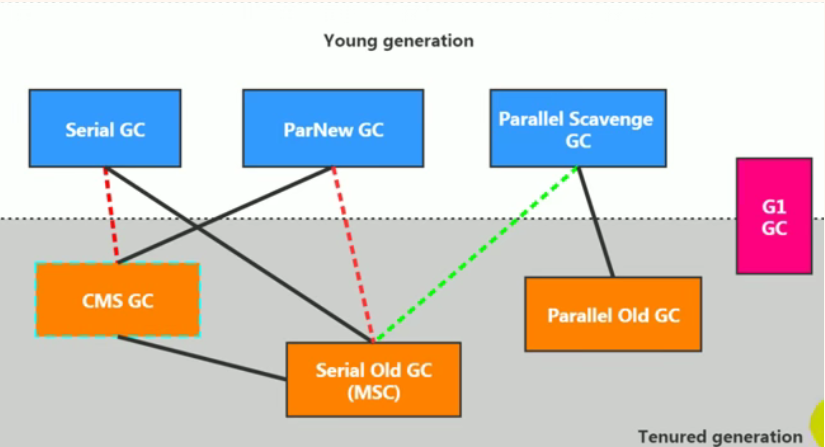
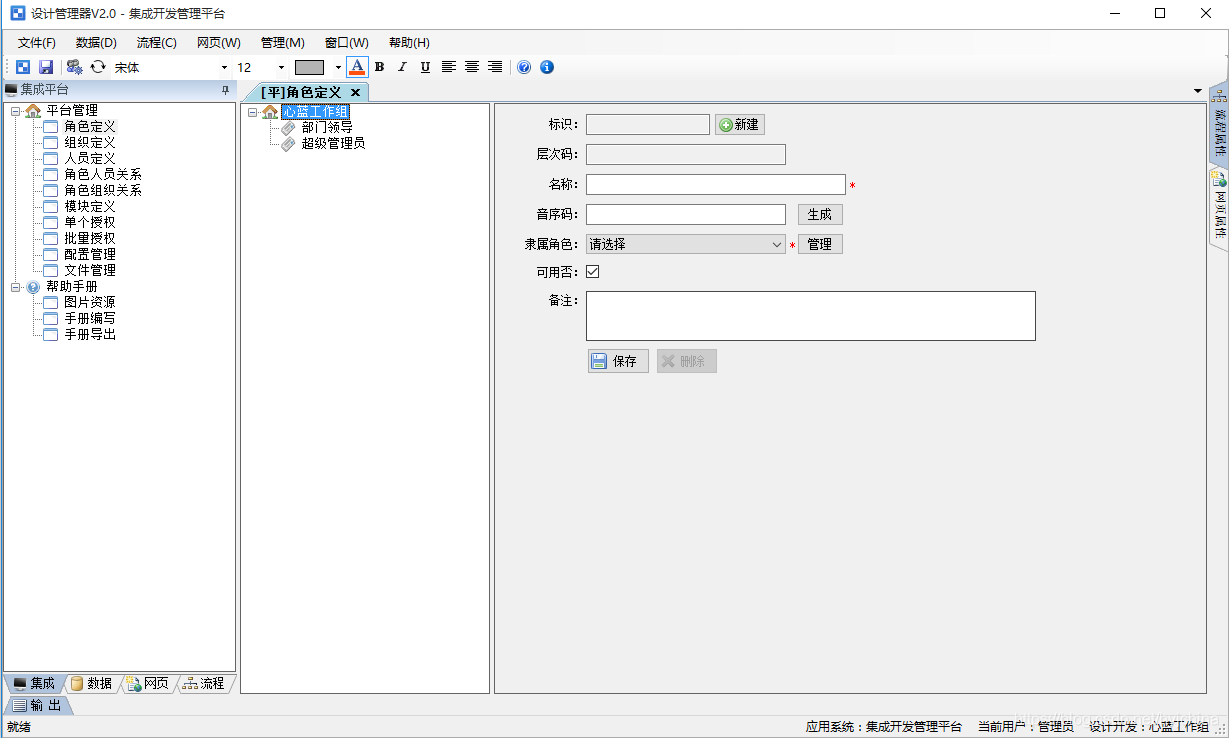

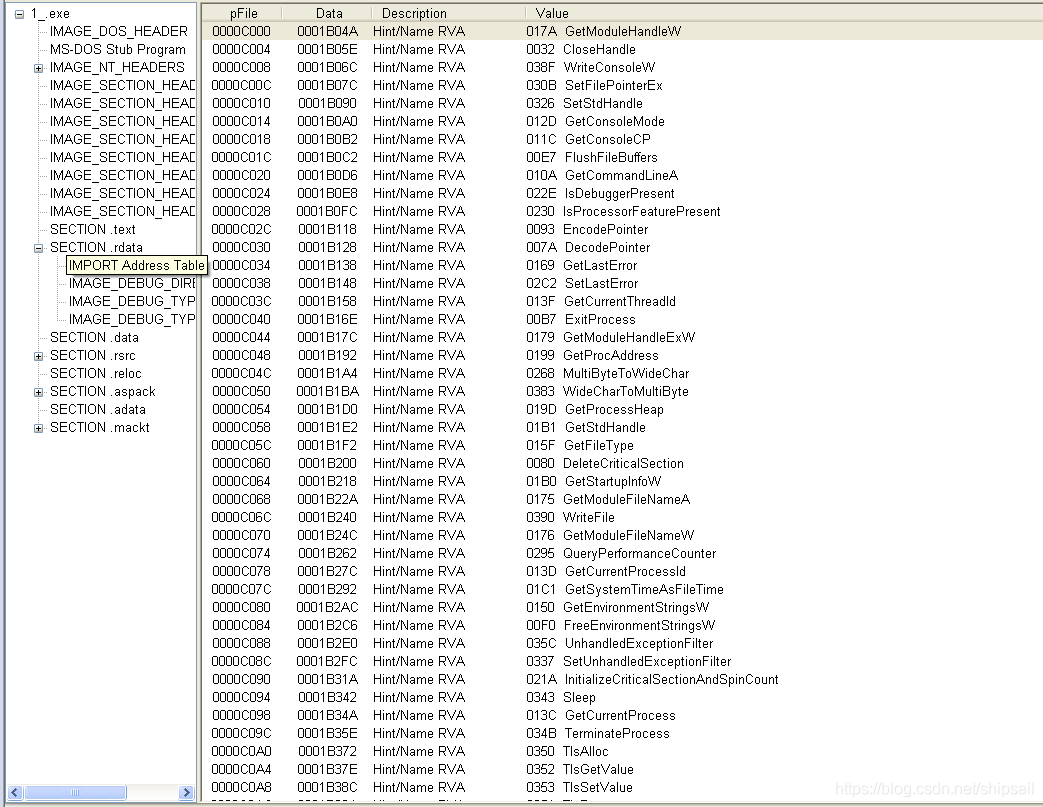
![[reverse intermediate] eager to try](/img/5a/568533850ddfd1c41117da0df50e20.png)
